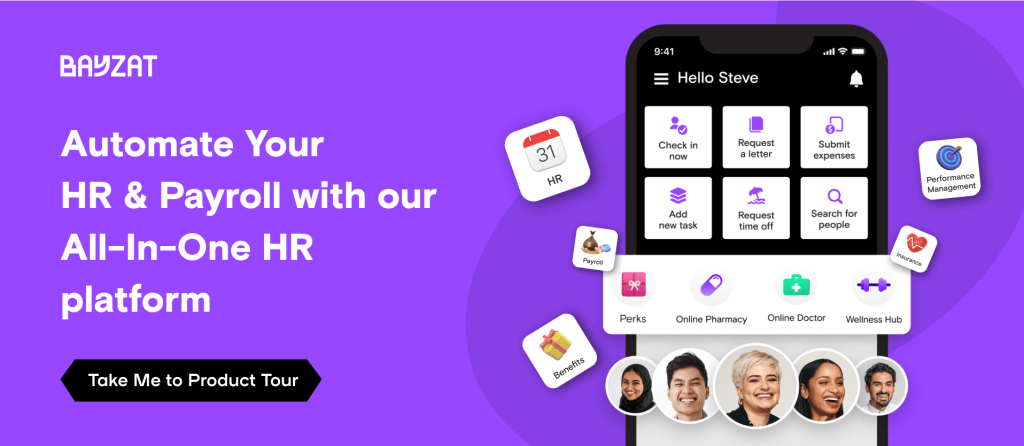The thought of having to look for a new employee can cause panic in hiring managers. The need to fill the vacancy fast is important: recruitment costs money. But finalizing the right hire is just as important as the pace of hiring. Hiring mistakes can lead to higher employee churn rates which lead you back to recruitment – so the cycle goes on. How can your SME avoid this?
The UAE continues to be a global talent magnet. According to a report by LinkedIn in partnership with the Ministry of Economy, the Emirates ranks among the highest in the world for the inflow of talent. Hiring rates grew by 36% between December 2019 and December 2021. However, the average candidate in the country could still wait up to 35.8 days average for a response.
Even more worrying is the fact the employees in the UAE change jobs more regularly than elsewhere in the world. A high staff turnover rate can cost your business a lot. Some estimates suggest businesses in the UAE spend around AED9.9 billion annually due to employee turnover. And better employee retention starts with a better recruiting process.
So how do you avoid hiring mistakes?
8 common hiring mistakes and 8 solutions
If you want to break away from the costly recruitment cycle, you need to fix the issues at the heart of hiring. Here are the eight most common hiring mistakes and solutions to each problem.
#1: Unclear job expectations, goals and qualification
You post a job and then get candidates that don’t really fit the role. Many job posts these days are unclear about what the company is looking for, what the role entails and what skills do you need to have. If you’re not clear about what you want, then you can end up having to pick a candidate that’s not perfect from the start.
The solution:
You must carefully consider what skills, qualities, and qualifications are required from the candidate before you start the recruitment process. The primary task you’ll need to consider is creating a job description that explicitly states exactly what an ideal candidate would need to deliver in the job role.
You can do this by including the following things in all of your job descriptions:
- Routine tasks that are involved in the job role
- Any additional responsibilities & possible collaborations with other departments which may be part of the role
- Minimum requirements & expectations criteria for shortlisting
- Business history & background
- Company work culture, principles & adherence policy
- Your policy for diversity & the right to equal employment opportunity
- The scope of future growth and mobility within the role, department, or the business
#2: Lengthy interview process
The major proportion of the SMEs in the UAE have interview processes that extend up to five rounds. This, in turn, adds up to candidate bias and results in poor candidate experience, which hurts your brand and the likelihood of recommendations. You may even have great candidates drop out because the process drags on.
The solution:
The earlier you assess the core criteria and values, the better it is to judge the candidate’s capabilities and potential match for your in-house work culture. You also want to set expectations from early on. Communicate how long the recruitment process can last and what happens at each step.
#3: Focusing too much on technical skills
You need people that can perform the technical parts of the role. But if you focus solely on these technical skills, you can end up with employees that don’t fit the company culture. It is important that you don’t overlook talent in terms of soft skills.
The solution:
You need to simultaneously evaluate soft skills – the employee’s ability to communicate, lead, and the ethics they adhere to. If you don’t align these soft skills with your work environment and culture, you’ll end up with the wrong hire, and have to invest more in recruitment marketing within the next few weeks after this particular unsuccessful hiring round.
Gauge an employee by their potential, and broader skills than only by their job title or last quarter’s performance. Maybe it’s the right person in the wrong role. In fact, when Nielsen analyzed their retention data, they saw that employees who made lateral career moves (a job within the company) tended to stay much longer and were nearly as effective as giving them a promotion. If you have to get senior talent, first nurture the rising in-house stars, and hone them to leadership roles with the right skills.
#4: Not providing recruitment feedback
One of the biggest hiring mistakes is to omit feedback from all candidates. The recruitment process is rather daunting yet your candidate pool could improve themselves, if only they receive an additional nudge from your end as a potential employer who once assessed them. Employers tend to notify their applicants with a generic template email in case they’re rejected, and often do not care about the effort they’ve made so far to progress through the application stages. Even with successful candidates, the feedback is often non-existent. They got the role so that’s enough, right? But it’s not quite the case. Feedback is always good because it shows the things one can improve and the things one has done well.
The solution:
If you want to keep attracting good candidates, you want to create a hiring cycle that involves an action to provide consistent and actionable feedback to all candidates, regardless of the stage they’re knocked out at. This can just be a quick analysis of the candidate including the reason they weren’t a match for the role you were recruiting. Detailed feedback goes a long way toward improving your employer brand, and such applicants who receive well-formatted feedback are more likely to recommend your open positions to other people in the future.
#5: Inflating the recruitment team
SMEs don’t always have a big pool of resources. But even the smallest of organizations can sometimes go overboard with their recruitment teams. HR managers can start adding staff to the process and involving personnel that doesn’t really matter at this point. Having too many cooks in the kitchen can hurt!
The solution:
Keep the recruitment team compact. Make sure you only involve people who actually matter at this point. Don’t mix different teams but ensure all candidates are assessed by the same team for accurate results.
#6: Not performing proper background checks
Unfortunately, numerous candidates lie on their Resume. It’s not always completely intentional though. At times, it is a case where applicants would simply want to make themselves look better.
The solution:
You have to check their references and verify their background, expertise, punctuality, professionalism, and likelihood to deliver for the particular job role you’re recruiting for. It might seem tedious but it can save a lot of heartbreak later down the line.
#7: Forgetting about flexibility
The modern employee experience has a lot more to do with making it easy for your team members to deliver on their roles. As much as you’d expect them to carry out the necessary activities in a timely fashion, in-house employees enjoy a certain amount of space among the line managers and the rest of the team.
Micro-management contributes to a bigger proportion of distress, and lack of flexibility is the contradicting factor that is often ignored within this particular top-line cause.
94% of employees say they would stay longer if a company invested in their career. Professional development resources, sponsoring training courses, counseling, and certification programs, and offering paid leave for exams, can encourage employees to gain new skills, upgrade, reskill and advance their careers without leaving. It’s more cost-effective than hiring someone trained outside.
New parents often would require facilities like working from home, or shorter working hours on particular days to pick up their children from school. Your team’s needs and personal requirements can change over time, and as a responsible employer, you need to consider their personal lives to maintain a happy work-life balance for your team, without which they are often forced to leave the business and opt for your challenger or competitor who may offer such benefits as part of their employment contract.
The solution:
Be flexible when you are hiring new talent. Understand that employee situations might change and keep this in mind. Make sure you add professional development opportunities to new hires and existing employees. This guarantees you’re not having to constantly hire new talent but have a better pool in-house to adapt to changing situations.
#8: Not assessing actual employment needs
Far too many organizations are on a constant hiring cycle instead of focusing on employee retention. It’s a big hiring mistake to only recruit for the current skill gaps. You want to keep an eye on the employee market at all times and assess actual employment needs, current and future. If any of your key employees drop off halfway, although it may call off for a crisis initially, it is not ideal to run an emergency recruitment round and invite new applicants over for the position. Recruiters usually resort to this measure when they do not currently have a healthy pipeline to depend on, but it is also not a good practice for controlling the pace of the hiring process.
The solution:
Maintain good relationships with passive candidates. Ensure you are ready to fill a gap in-house and with these previous candidates that didn’t quite make the cut. Keep a constant eye on your employment needs, don’t just respond once there is a talent crisis at hand.
Implement the right retention strategies
By avoiding common hiring mistakes and focusing on the above retention strategies, you can cut down the cost of recruitment and reduce staff turnover. The key is to focus on employee management at each stage of employment. If you provide your employees with opportunities to grow, a flexible work environment, and the right benefits, you can maintain talent and attract new ones.

Contact Bayzat to hear more about talent and employee benefit management. We can help you make sure your recruitment drive will focus on the right things and your employees are happier at work!








Get Social